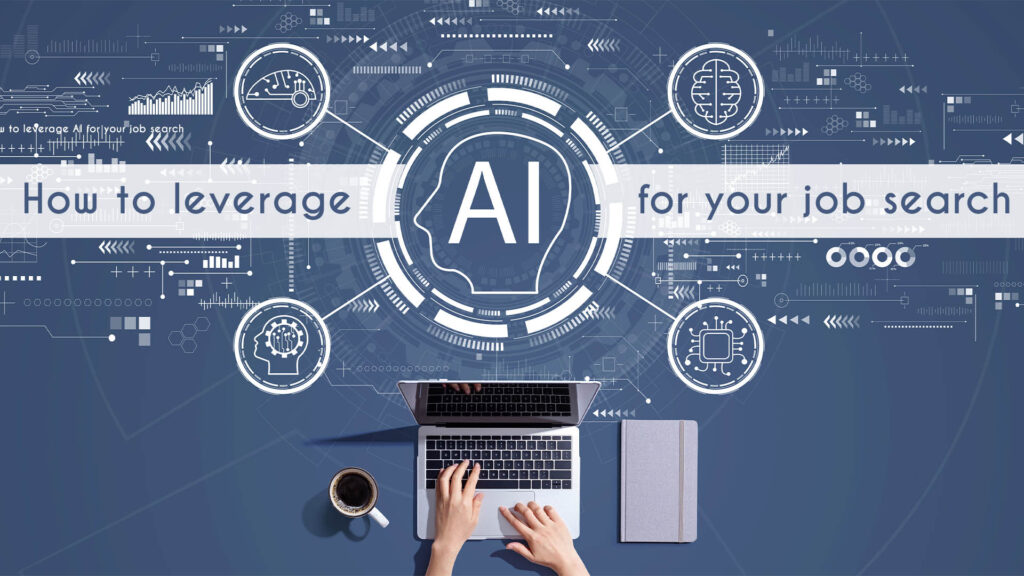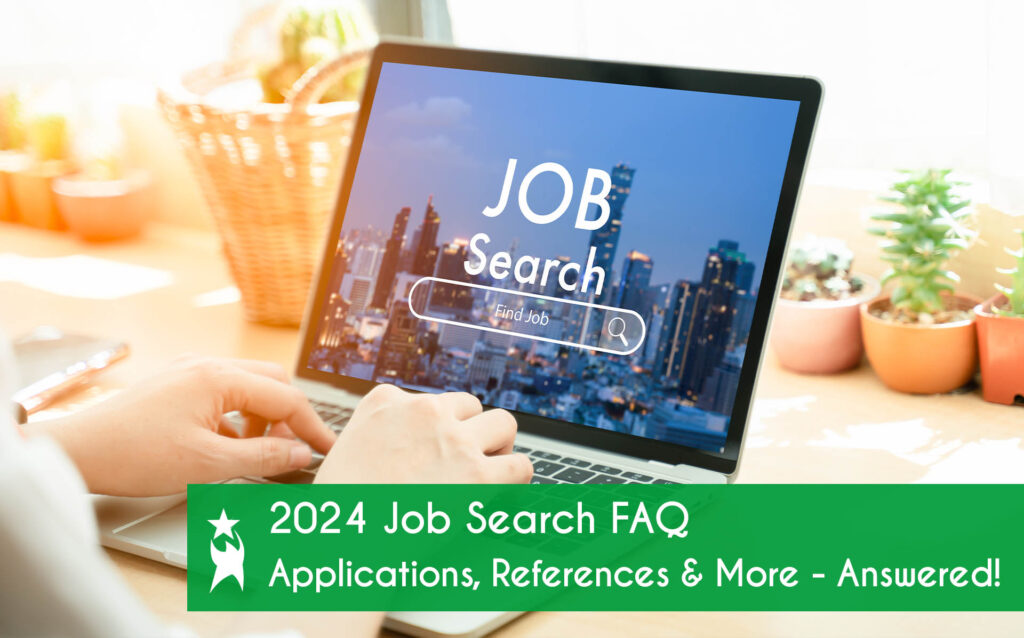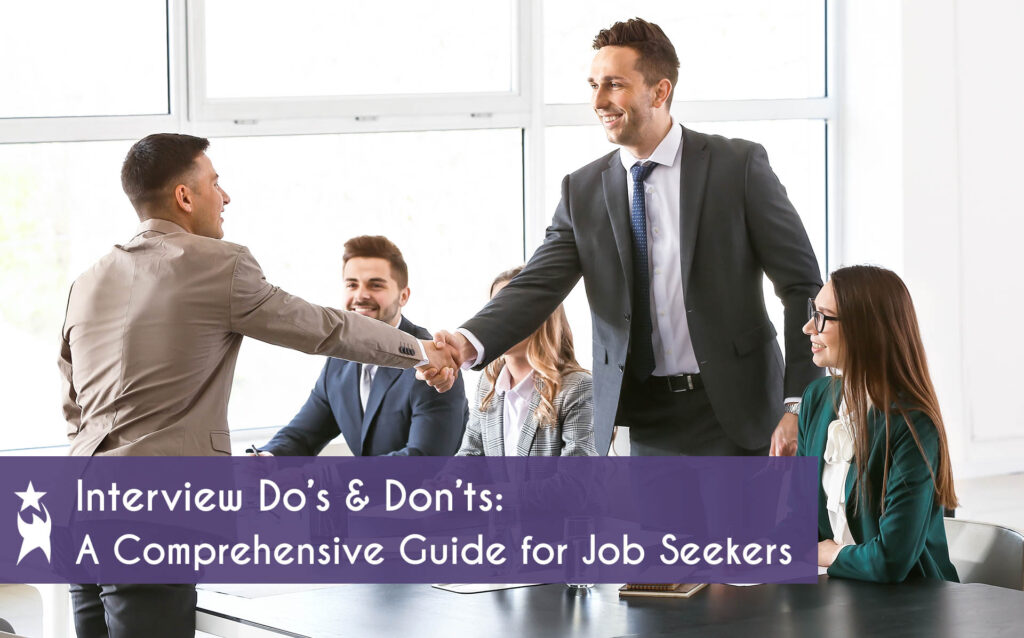July 25, 2023
In today’s fast-paced world, technology has revolutionized every aspect of our lives, including the job market. As a job seeker, it’s crucial to embrace the power of Artificial Intelligence (AI) to gain a competitive edge and navigate the ever-evolving landscape. Let’s explore practical ways to leverage AI in your job search journey while considering the ethical implications. So, grab a cup of coffee and let’s dive into the exciting world of AI-driven job hunting!
Optimizing Resume and Cover Letter with AI
AI-powered tools could be your a weapon in crafting a standout resume and cover letter. You can try out platforms like Jobscan, Rezi, or VMock that analyze job descriptions and provide insights on optimizing your documents for specific roles. These tools can help you align your skills, keywords, and achievements to increase the chances of catching the recruiter’s attention.
Always review any documents AI creates or edits for you. AI is capable of creating fiction, which obviously isn’t appropriate for your resume or cover letter. Alternatively, a good recruiter will provide the same service without the worry of sending your documents over to a hiring manager with false info on your resume. (Bonus: a good recruiter also has relationships with hiring managers, and will introduce you to them).

Intelligent Job Search Platforms
Traditional job boards can be overwhelming, but AI-driven job search platforms streamline the process. Popular websites like LinkedIn, Indeed, and Glassdoor all employ AI algorithms to match your skills and preferences with suitable job openings. They provide personalized recommendations, job alerts, and even notify you when your skills are in high demand, making your search more efficient and targeted. Here are a few ways you can optimize the use of AI on these sites:
Profile Optimization for AI
Start by optimizing your LinkedIn and Indeed profiles to maximize their effectiveness. Use relevant keywords, highlight key skills and achievements, and ensure your profile is complete and up to date. Find the keywords relevant to your industry by looking through some job ads for jobs similar to yours (or if you’re changing industries, look at ads for the career you’re targeting). Take note of the skills and tools that appear frequently in the job posts, and look for ways to incorporate them into your profile. AI algorithms often rely on these keywords and skills to match candidates with suitable job opportunities.

Job Search Filters
Leverage the advanced search filters provided by these platforms. AI algorithms take into account various factors like location, industry, job title, and experience level to present you with more targeted and relevant job listings. Use these filters to narrow down your search and focus on the most promising opportunities.
To get the most out of these search engines, spend some time defining your job search goals. For example: are you open to similar jobs in different industries? Are there other job titles that companies might use for the same job? What commute radius are you comfortable with? Try entering multiple combinations of search parameters to locate your ideal job.
Recommended Jobs
Pay attention to the recommended job listings suggested by AI algorithms. Both LinkedIn and Indeed use AI to analyze your profile, job preferences, and past interactions to provide personalized job recommendations. Explore these recommendations regularly as they can help you discover hidden opportunities that align with your skills and career aspirations. Setup email alerts to optimize this feature.
Skill Endorsements and Recommendations
Encourage colleagues, clients, and supervisors to provide skill endorsements and recommendations on your LinkedIn profile. Don’t be afraid to ask for them directly, but if that’s outside your comfort zone, try leaving a recommendation for them first. Most people will return the favor.
These endorsements and recommendations not only enhance your credibility with recruiters and hiring managers, but also provide valuable data for AI algorithms. Positive endorsements can increase your chances of being matched with relevant job listings. If you’re currently getting recommendations that don’t make match for your current job search goals, try giving your connections a little more direction when asking for a recommendation. As long as it’s a skill they’ve seen you perform, go ahead and tell them which skills you’d like them to review.
Networking and Connections with AI
Leverage the power of AI-driven networking on LinkedIn. It can help you connect with contacts you already know, as well as help you find new contacts to add to your network. Explore the “People You May Know” section and look for recommended industry-specific groups to join to expand your network.
Once you’ve connected, make sure to engage with relevant posts, share insights, and connect with professionals who can provide guidance or open doors to new opportunities. AI algorithms consider your connections and interactions when recommending jobs and candidates. With this in mind, be mindful your activity on LinkedIn and try to be more strategic than just using the platform to socialize with current colleagues. Engage with posts and individuals in your industry to leverage this feature, and setup a regular schedule for interacting on the platform.
Active Job Seeker Status
Indicate your job seeker status on LinkedIn and Indeed. This feature notifies recruiters and hiring managers that you are actively seeking new opportunities. AI algorithms often prioritize active job seekers when suggesting candidates to recruiters, increasing your visibility to potential employers.
LinkedIn employs some advanced features with their Open to Work status. For job seekers looking to change jobs, you can opt to hide your #OpenToWork status from your current employer. For this one to work, make sure the current company listed on your profile is up to date. LinkedIn AI will also automatically turn off your #OpenToWork status if you stop responding to messages from recruiters, so be sure to respond to keep the status active.

Applicant Tracking Systems (ATS)
Many employers utilize ATS software to manage applications efficiently. Optimize your resume and cover letter to align with ATS requirements. Pay attention to keywords, formatting, and file types recommended by the platforms.
Beyond the basics of tailoring your resume with keywords, don’t overlook technical ways to optimize your documents for this type of AI. Avoid fancy fonts the system might have trouble reading and use standard formatting and headings the ATS will be most likely to recognize. Tailoring your application materials for ATS compatibility can increase the chances of getting past initial screenings.
AI-Powered Continuous Learning and Skill Development
LinkedIn and Indeed offer AI-powered learning platforms like LinkedIn Learning and Indeed Skills, which suggest courses and certifications based on your profile and career interests. If you already have a skill, earning the LinkedIn certification is as quick as passing a multiple-choice test.
Invest time in upskilling and staying updated with industry trends. Demonstrating a commitment to learning can enhance your profile and make you a more attractive candidate to hiring managers. Passing and showcasing certifications on your profile that are relevant to your career goals can also improve your LinkedIn job recommendations.

AI-Enabled Networking
AI-powered networking tools like Crystal can help you build meaningful connections. This platform provides insights into individuals’ personality traits, communication styles, and preferred methods of engagement. Armed with this knowledge, you can tailor your interactions to establish connections that can potentially open doors to new opportunities.
Although Crystal’s most powerful tools are offered under their paid model, they do have a free option that includes insights for 10 profiles on LinkedIn. Install their free Chrome browser extension to see communication suggestions for individuals directly on their LinkedIn profiles, and take a peek at your interviewer’s profile ahead of your next interview.
Streamlining Interview Preparation
Preparing for interviews can be nerve-wracking, but AI tools can make it easier. Platforms like StandOut and Interview Prep AI leverage AI to simulate mock virtual interviews and provide personalized feedback.
The AI tool will analyze your responses, body language, and tone of voice to help you refine your interviewing skills and boost your confidence. This approach could provide more detailed and objective feedback than relying on friends and family for help preparing for job interviews.

Ethical Considerations in AI-Driven Job Hunting
While embracing AI in job hunting, it’s important to keep some ethical considerations in mind. Here are some key points to consider:
Algorithmic Bias
AI algorithms can be prone to biases, leading to discriminatory outcomes. Job seekers can advocate for fair and transparent AI practices and encourage companies to regularly audit and refine their algorithms to ensure equal opportunities for all.
Privacy and Data Security
When utilizing AI tools, be mindful of the data you share. Read privacy policies, understand how your information is being used, and only provide data to trusted platforms that prioritize security and adhere to data protection regulations.
Human-Centric Approach
Remember, AI should complement human efforts, not replace them. Try to maintain a balance between technology and human connections throughout your job search. Networking, building relationships, and showcasing your unique qualities are still paramount in landing your dream job.
The Conclusion
The integration of AI in job hunting presents exciting possibilities for job seekers. By leveraging AI-powered tools and platforms, you can optimize your resume, streamline your job search, enhance networking efforts, and sharpen your interview skills. However, ethical considerations are crucial to ensure fairness, privacy, and a human-centric approach.
So, embrace the power of AI, but always keep your unique strengths and personal touch at the forefront of your job search journey. By harnessing the potential of AI while staying true to yourself, you’ll maximize your chances of finding that dream job. Good luck out there!
Looking for a job right now? Get started on our job board or give our recruiting team a call at 253-277-4000.
This blog post was written by AI and edited by Chrissy Roshak.
Got questions about your career? We’re always happy to answer questions from our readers, so send them our way!
Check out our other blog posts for more useful tips!
Resources
Looking for a way to help the people of Puerto Rico after Hurricane Fiona? These are the organizations Angel recommends:







